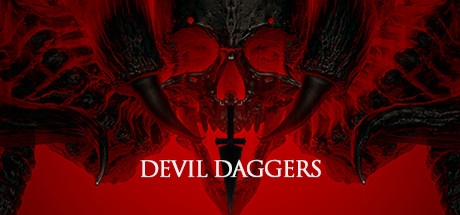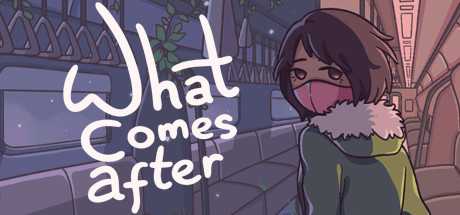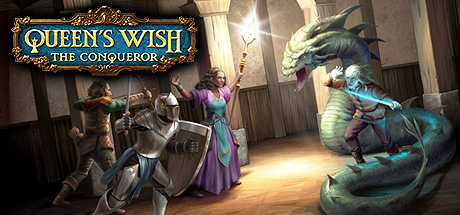
Three years ago I wrote a post for first-time game devs on how to actually finish a game. I outlined what a “small” game was and how to actually accomplish it.
The TL;DR of my advice was basically make a game that plays like one released pre-1981. Focus on simple arcade mechanics. My 2018 advice is still sound but a couple people thought I should do a new version for 2021.
I got an idea for an alternative way to release your first game in 2021. Here it is.
Who this advice is for?
This week’s blog is specifically targeted to folks who have never shipped and sold a game for money. You have always wanted to ship something, just to see what it felt like. You wanted to join the world of game development and finally call yourself a game designer! It isn’t about the money, it is more about the accomplishment. Sure money would be great to have but you have a full time job. You just want to see if you actually enjoy it and consider a career change.
Or maybe you are knee deep in a multi-year long project and you need a break. Søren Kierkegaard called this Crop Rotation.
The method I propose does not consist in changing the soil but, like proper crop rotation, consists in changing the method of cultivation and the kinds of crops. Here at once is the principle of limitation, the sole saving principle in the world. The more a person limits himself, the more resourceful he becomes.
Søren Kierkegaard
Why you have never shipped a game
What I typically hear goes something like this …
“I had a really great idea! I implemented a good piece of it in a prototype or from a game jam. It was pretty fun! I had a player character moving around, enemies, AI. However, as I was developing it, I started adding features, and more levels. Then I read about / watched a GDC talk / played this really great game with an interesting mechanic and I was inspired to add something similar to my prototype. Then scope creep blew up the scale of the game and rather than finish it, life got in the way and I got busy or lost interest. A few months later I had a new totally amazing idea for a totally different game.”
Basically everyone who has not yet released their first game
Don’t worry you are not alone. This happens all the time. Despite shipping over 6 games, I also have had projects follow this doomed trajectory.
Solution: slash then ship one of your abandoned projects
I think one of the biggest problems first-time devs have is they never know when their game is “done.” That insecurity leads to launch-stage-fright. If someone plays and critiques your unreleased game you can always say “oh it isn’t done yet, that will be fixed when I release.” But once you launch a game, you own all the criticism, it was you who decided to launch it.
That is a difficult mindset and it takes a ton of practice to get over.
So here is my solution for your first game… dust off one of your half-finished prototypes and I will decide the scope for you. Then when people call you out on your “crappy” game, you can blame me for the reduced scope and limitations because I told you to do it. Here are your restrictions for your first game (Depending on the genre).\
Action game

If you are making an action game such as a platformer, FPS, Zelda-like-action-RPG, twin-stick-shooter, or racing game (etc), you are going to turn it into a wave based game.
Clean up your core gameplay loop and character controls and combat (if you have it). Then spawn enemies randomly on the map and when the player kills / stomps / smashes all the enemies, the level is over. Then the next wave comes. Gradually increase the spawn rate / HP of the enemies. Keep track of how many kills the player got and save that as a high score.
Done.
Pitfalls to avoid:
- Don’t overthink the random generation of the enemies. Don’t try to override the built in random algorithm because it isn’t random enough or implement some perlin noise nonsense. Just use random(x) and change the value of x until it is fun.
- Don’t overthink the enemy AI pathfinding. Just make them head towards the player. If you want to vary it up, make some of them approach the player in a SINE wave formation.
Games to be inspired by
Note that these games are much more complex than what I am suggesting. But, at their core, all of these games are basically: player stands in the middle and waves of enemies chase after them. That is what you are trying to accomplish here.
Puzzle game

If you are making a puzzle game with a central mechanic like a Sokoban or a sliding ice puzzle, make 50 levels. That is your limit.
Across those 50 levels you are going to mix in 5 different mechanical variations. So for instance, if you are making a laser and mirror puzzle game, your 5 variations of mechanics would be something like:
- Locked doors
- Melting ice
- Moving blocks
- 1 way mirrors
- Portals
Then you are going to make 10 levels that explore each of those mechanics. So 5 mechanics x 10 levels = 50 total levels. Done! Release it!
Pitfalls to avoid:
- I know Jonathan Blow said in that one talk that you need completeness of design but I promise he is not going to hunt you down and scold you for your incomplete design. Just finish this one game then your second one can be “complete.” If he does hunt you down, just say “hey this is my first game.”
- Rip out story. I know you want to make a puzzle game that is also a metaphor for the post-structural… post-capitalist… I don’t even know what. That stuff is great but making a fun puzzle is hard enough and trying to balance gameplay and narrative themes will stop your progress every time. Just make your first game not have any deeper meaning and publish a separate, overly-long, essay on your game’s website instead then link to it from the game’s end credits.
- Don’t spend any time rearranging your levels to pull off a perfect Csikszentmihalyi-optimal-experience state of flow. Who cares about Csikszentmihalyi!?! It is your first game! Just throw all 50 levels on a grid menu and have them all unlocked from the beginning so players can play through them in any order. That prevents people from getting stuck on one out-of-balance, way-too-hard puzzle and then quitting your game.
Games to be inspired by
- Anything made in PuzzleScript. Those games are great.
Narrative game

I typically recommend against narrative games as a first game but I think the Visual Novel genre is actually quite viable now and can be a great entry into game development. The problem here is that it is usually easier to write a story than it is to implement it in an interactive environment.
Therefore I recommend you pick 1 character from your abandoned narrative game and write a small prequel story about them. It should be very linear and have a simple 3-act structure. Limit the number of intractable characters.
If you abandoned your previous games because you are a writer who isn’t well-versed in code and development and you got stuck implementing dialog trees or menus, don’t be afraid to use off-the-shelf software. Consider Twine and here is how to make it an executable for Steam, RPG Maker, or A visual Novel Toolkit Like this one for unity.
Pitfalls to avoid:
- Limit your game’s number of characters to cut down on the number of branching paths.
- Set the game in a single location like a small village outpost or a bathroom that you got trapped in because of some zany Romantic antics.
- If you do have NPCs, figure out creative ways so you don’t have to animate their faces like making them a hologram in Tacoma, or putting a helmet on their head, or low-poly art like the first metal gear.
Games to be inspired by
- What Comes After
- Dr. Langeskov, The Tiger, and The Terribly Cursed Emerald: A Whirlwind Heist
- A Short Hike (You should watch this talk too)
Role playing game

This genre is hard because it is almost by definition sprawling and open ended. To get around this, look in your heart and decide what you like more about RPGs, the characters and story or the mechanics, spells, and strategy.
If you like story and characters better, make a narrative game using the characters and setting of your RPG world. Use the same rules I defined up above for narrative games.
If you like the mechanics, spells, and strategy aspects of RPG, then use the rules I defined up above for Action games. You create an awesome battle system and then throw waves of enemies at the player. Don’t create background on the character or the world. Just focus on developing the systems.
Release it! You must!
Now you got the game implemented. Congrats! You made your first game.

You have to release it. YES! That is the most important part of this exercise. Here are the final rules and the reason why:
- Release the game on Steam and charge $2.99 for it. If you release it for $1.00 you cannot discount it more than 50% because steam doesn’t allow games to be cheaper than $0.50. Shoppers set up triggers and wait for 60% and 75% off discounts. You need to increase your price so you have the room to discount it.
- You must add customizable controls. It is good for accessibility, Steam players expect it, and it is code that you can reuse in your next full sized game.
- You must add achievements. Players love achievements. Add at least 26. You will sell more copies because you have achievements.
- If you can afford it, hire a good artist to make a cover image (in Steam it is called a capsule) for your game. This is very very important. Don’t use a screenshot for your capsule art. I wrote about how a capsule art change increased sales 20x for this game and also this article about how a capsule change increased wishlists big time!
- If you can afford it and you are not an artist, pay for good professional game art. Since this is a small game you don’t need much art. I cannot overstate how much art sells games on Steam. People buy games based on graphics. Try your best not to use programmer art. There are also free art assets here and perfectly reasonably priced asset store art.
Wait a minute, a small game released to Steam I have some objections to this…
I hear you, releasing a small game that has derivative game design sounds like blasphemy. This is madness you might think! Here are some common objections to this strategy and why I don’t think it is a problem:
- This game you propose doesnt have a HOOK! Ryan Clark said my game has to have hooks! F**k hooks (for your first game). The only thing you are trying to do right now is release a game. That is your only care in the world. Your game is probably not going to be unique. It isn’t going to change gaming. That doesn’t matter! You are just learning how to release a game. The press probably won’t write about your game. That is ok! It is your first game! Don’t even worry about hooks at this point. Ryan Clark is not going to chase you down and yell at you because your game doesn’t have hooks. It is going to be ok.
- This small game will not make money! Answer: It probably won’t. But money doesn’t have to be the reason to do everything. The purpose of this exercise is not to earn money. It is to get you over the fear of releasing. Once you release your first game you will realize it isn’t that bad. You will have more confidence for your next game.
- Seriously, it won’t make any money and this is a waste of time – Answer: Steam is huge. And even if your game doesn’t sell well this tiny game will get viewed thousands of times a month. I created a place-holder game on Steam called Gun Miner to validate an idea. I don’t think I will ever release it and haven’t touched the page in over a year but just last month it got 1900 views. That is better traffic than tweeting about your game. It is important to build up a catalog of titles to build your reputation. Small games can do that.
- No Really, seriously, listen to me, it won’t make any money and this is a waste of time – Answer: As a game marketing consultant, I have worked with and talked to a bunch of real-life game publishers about what games they decide to publish and which ones they decide to pass on. Many publishers pass on games because the developer has never published a game before. Publishers have been burned by people who say they can deliver but then ghost. Publishers lose tens of thousands of dollars that way. If you prove that you have the ability to release games, you will look less risky when you need a publisher for your eventual big game.
- This will just result in hacky code and tech debt – Answer: Probably. But the world runs on debt. Games are full of hacky, creative decisions not perfect code. For instance in Mario Galaxy, environment dialog boxes are just signs hidden inside of houses – see this image for proof. In Fallout 3, the trams were just an NPC wearing a tram tram model as a hat – see this story about it. You need to learn how to do these hacks to release games. This exercise will teach you the way.
- Why can’t I just release it on Itch.io since this is just a cheaper experiment? Answer: NO! I love itch but very few people buy games on it. You are going to sell more copies on Steam, I promise. Also the itch audience is a bit more forgiving of prototypes and test games. You want cold-hard gamer feedback now so that you learn the tastes of that audience rather than work on a super long game for 4 years and learn that lesson too late. You will be a better designer because of this feedback. Plus if you are eventually going to be releasing a bigger game on Steam you should be building an audience and a reputation now. Be brave. You must learn the ecosystem of Steam.
- I can’t do this because I am not inspired by this small game – Answer: Artist Chuck Close said “Inspiration is for amateurs – the rest of us just show up and get to work.” Your plumber doesn’t show up, use the plunger once and say “I am not feeling this” and then goes home leaving you with a clogged toilet. To release games consistently, you must work through long periods of drudgery – even on your dream game. There will be option menus to program, shaders to debug, memory leaks to fix. You have to build up that drudgery muscle. To get good at releasing games you need experience working through periods of not being inspired. This mini project will teach you that.
- This game is tiny and not worth charging for, I am just going to make it free. Answer: Don’t! Charge money for your time. Also, when a game is free and players hate it they will just delete it. They have no skin in the game. But, when someone gives you their money, they will tell you what they think. You will learn what real players honestly think about your game. You might let friends, fellow game designers, colleges play your game. I bet they tell you your game is awesome. But when you release a paid game on Steam you will hear real feedback from strangers because they gave you their money. Nothing can simulate that type of feedback other than releasing a game.
- Players will yell at me because this is a short simple game. Yes they probably will. First, blame me. Respond to every negative review with, “Yes it is short. I am just learning and this guy Chris told me to do this. It wasn’t my idea.” Then link to the blog post you are reading right now. I am giving you a “get-out-of-criticism-free” card. It was not your bad design decision it was my bad design decision. You are not a bad designer. The important thing is you finished something. Congrats
- This will hurt sales of my future games – Answer: Players rarely go back and look at old games and they don’t hold it against you on future ones. If you are really worried about this, create a separate publisher on Steam and publish this “learning game” under that publisher. Then create your future, “good” game under your “real” company.
- This is propagating shovelware and you are polluting all the games releasing on Steam! Answer: In the last 2 years the Steam algorithm has been updated to suppress shovelware. Read this blog post. The algorithm change hides games in the bottom 35% of earnings. This was to done to suppress quick, asset swap games. Steam has got this under control, you are not harming the gaming ecosystem. It is better for the great video game artform if you release a super tiny first game, get good, and then release a “real” fully-realized game rather then burn out on dozens of never-released titles.
- If I release this crappy game, I will forever surrender my chance of being a breakout star who has never released a bad game like Jonathan Blow, and Phil Fish, and Edmund McMillen. Answer: Don’t worry about that. The game’s press loves to write about young turks and best 30 under 30 and all that. That is my least favorite quality of the indie game press – they love to write about perfect auteurs who never compromise and suffer for their life work. Ignore them. They don’t matter in your success. The modern indie movement has driven up production levels which has made first-time indies to compare themselves to something way out of reach. Back in the day, Flash games were the perfect playground for developing talent. In fact, Edmund McMillen released tons of flash games before Super Meat Boy. He even re-released them on Steam. Stop trying to be perfect. This isn’t school. One D isn’t going to hurt your GPA for the next 4 years. Don’t be precious about game development. Release and learn.
Additional reading
- The Stairstep Approach To Indie Game Marketing – TL;DR of this post is if this is your first game, here are the type of marketing activities you should do. Don’t try to do too much.
- How to Tag your Steam Game – Since you are releasing your game on Steam, you need to learn how to tag it. Try this.
- 10 Easy Tips to Get Your Steam Page Ready For the Summer Sale – Some beginner tips on updating your Steam page.
- How to actually finish your game this year (2018) – My first article about finishing your game.
Header image by Ethan Robertson on Unsplash
Hi Chris! Happy New Year!
I remember reading your article way back in 2018. Spoilers, still working on shipping my 2018. I have a question though. I feel like I’ve cut complexity but it might still sound large. For context, I’m doing an RTS/Tower Defense game. The units are limited to paths, and are basically just mobile towers. The hook is that the units have branching paths. It sounds complex, but I feel like I can implement it in a relatively fast way. In fact I’m halfway there. My question id: What do you do with these ‘in the middle;’ scenarios? It’s not THAT complex, but it’s definitely more complex than the examples you gave? Do I ignore the instinct that I can do it and cut scope anyway?
Release a game without branching paths. Don’t do “hooks” for your first game. It might be worth it just to break this off as a separate game. Just make the most simple tower defense game you can possibly imagine.
Dude…this is just what I needed to hear, er, read. Y
Thank you for doing what you do!!
I just released my game Skycadia in December that followed a lot of these principles: https://store.steampowered.com/app/1364710/Skycadia/
I had grand initial plans with the prototype, but I ended up stripping it down to be comparable to Devil Daggers in scope. I’m not rich, but people are really enjoying it, and it is selling. Great article, as usual 🙂
P.S. – I have a constant looping video stream thanks to Chris’s excellent article here: https://howtomarketagame.com/2020/10/05/how-to-broadcast-your-game-on-steam/
It has a noticeable effect on the page’s visibility daily!
Cheers,
Ian
so proud of you! Game looks great.
I’m actually confused where in the linked article it says that Steam suppresses the bottom 35% of game. I read the article and didn’t see that bit anywhere. Did you mean to link a different article?
Hi Look for this line: “More generally, we found that releases above the 35th percentile earned more money in 2019 vs. 2018, and releases below the 35th percentile earned less.” – If you read between the lines here they were saying “Our algorithm gave more traffic (and money) to the 65th percentile and made it harder for the 35th percentile.
Remember that if you get confidence and/or traction from first release you can always work on extra features/content and “re-release” your game multiple times. You can even name and brand your new releases and market them on social media channels.